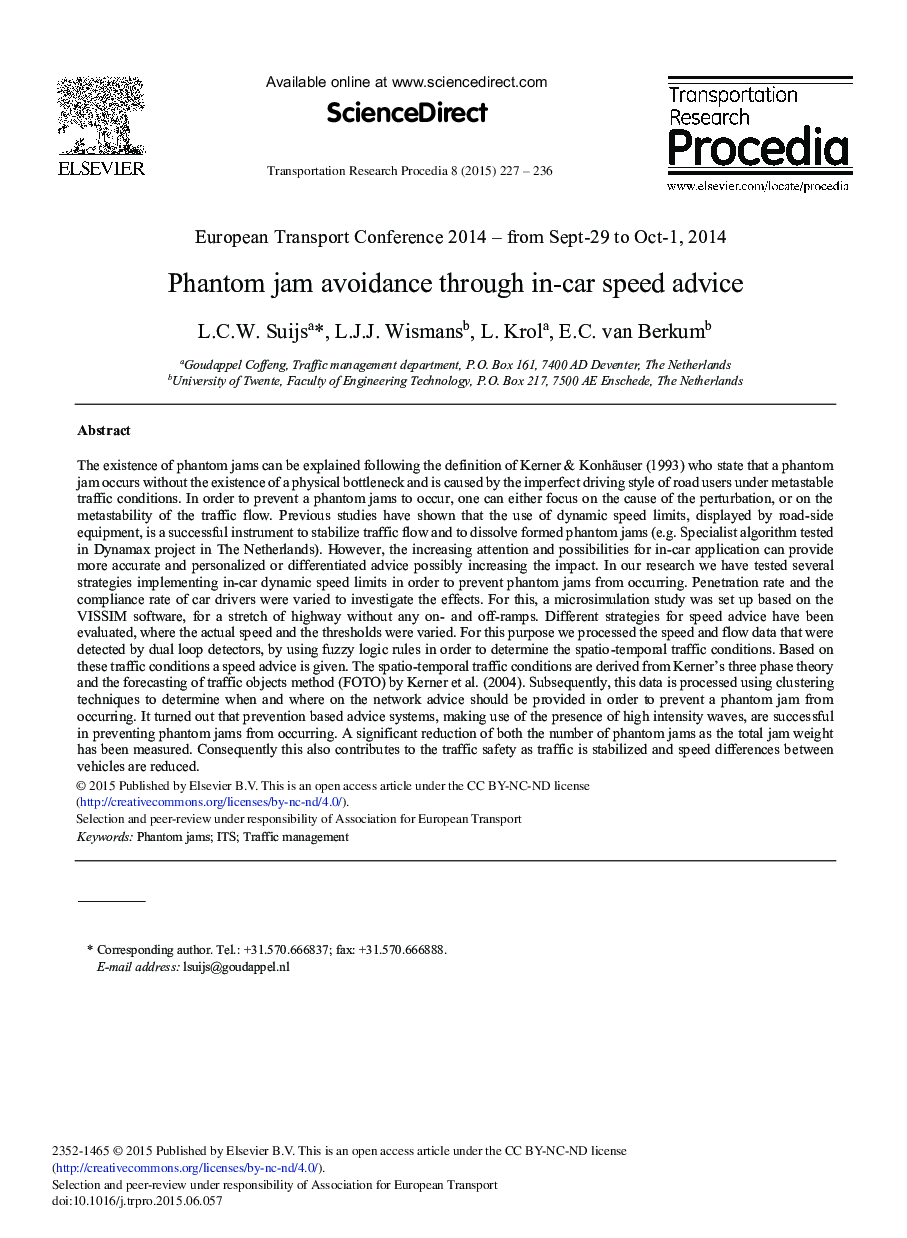| کد مقاله | کد نشریه | سال انتشار | مقاله انگلیسی | نسخه تمام متن |
|---|---|---|---|---|
| 1106498 | 1488287 | 2015 | 10 صفحه PDF | دانلود رایگان |
The existence of phantom jams can be explained following the definition of Kerner & Konhäuser (1993) who state that a phantom jam occurs without the existence of a physical bottleneck and is caused by the imperfect driving style of road users under metastable traffic conditions. In order to prevent a phantom jams to occur, one can either focus on the cause of the perturbation, or on the metastability of the traffic flow. Previous studies have shown that the use of dynamic speed limits, displayed by road-side equipment, is a successful instrument to stabilize traffic flow and to dissolve formed phantom jams (e.g. Specialist algorithm tested in Dynamax project in The Netherlands). However, the increasing attention and possibilities for in-car application can provide more accurate and personalized or differentiated advice possibly increasing the impact. In our research we have tested several strategies implementing in-car dynamic speed limits in order to prevent phantom jams from occurring. Penetration rate and the compliance rate of car drivers were varied to investigate the effects. For this, a microsimulation study was set up based on the VISSIM software, for a stretch of highway without any on- and off-ramps. Different strategies for speed advice have been evaluated, where the actual speed and the thresholds were varied. For this purpose we processed the speed and flow data that were detected by dual loop detectors, by using fuzzy logic rules in order to determine the spatio-temporal traffic conditions. Based on these traffic conditions a speed advice is given. The spatio-temporal traffic conditions are derived from Kerner's three phase theory and the forecasting of traffic objects method (FOTO) by Kerner et al. (2004). Subsequently, this data is processed using clustering techniques to determine when and where on the network advice should be provided in order to prevent a phantom jam from occurring. It turned out that prevention based advice systems, making use of the presence of high intensity waves, are successful in preventing phantom jams from occurring. A significant reduction of both the number of phantom jams as the total jam weight has been measured. Consequently this also contributes to the traffic safety as traffic is stabilized and speed differences between vehicles are reduced.
Journal: Transportation Research Procedia - Volume 8, 2015, Pages 227-236
